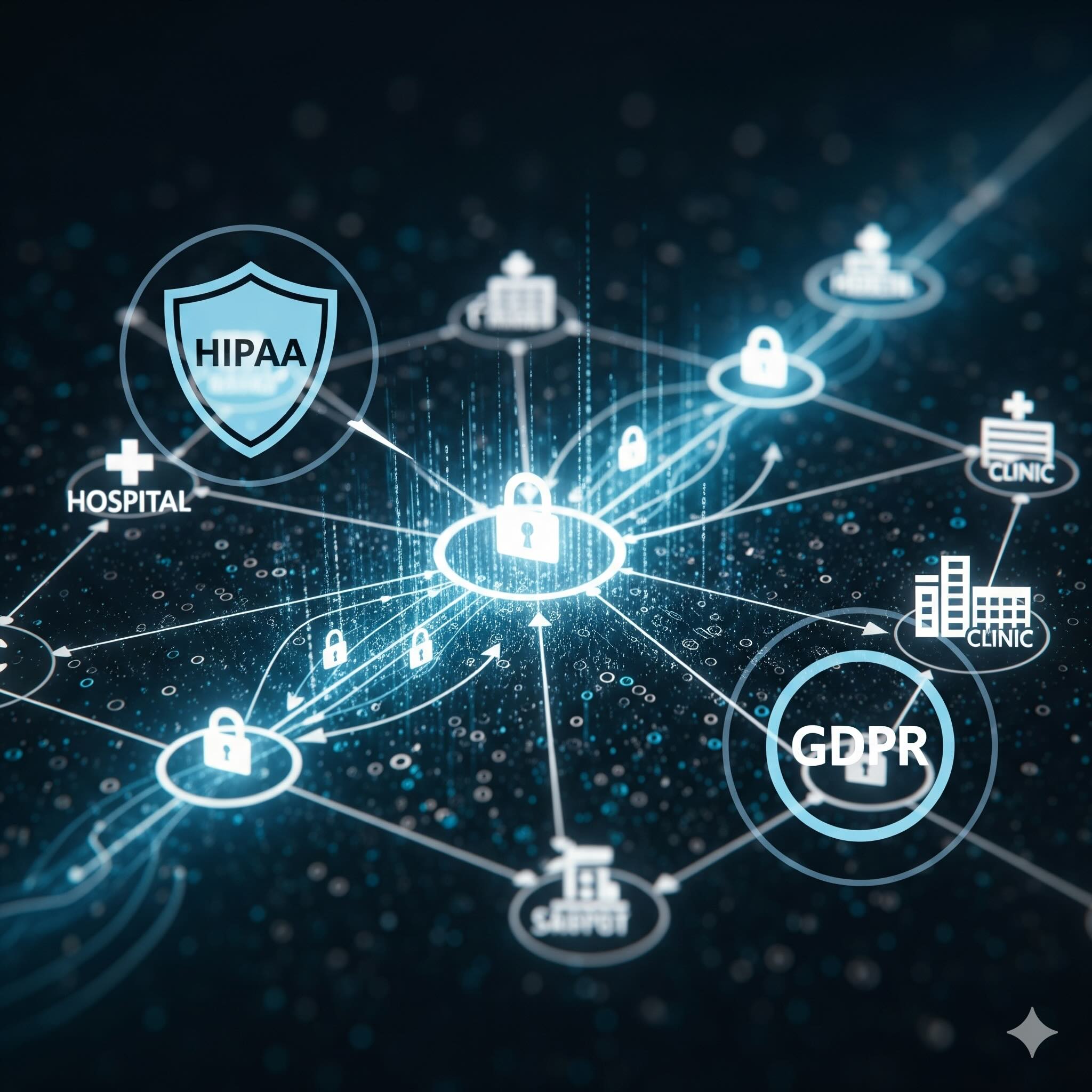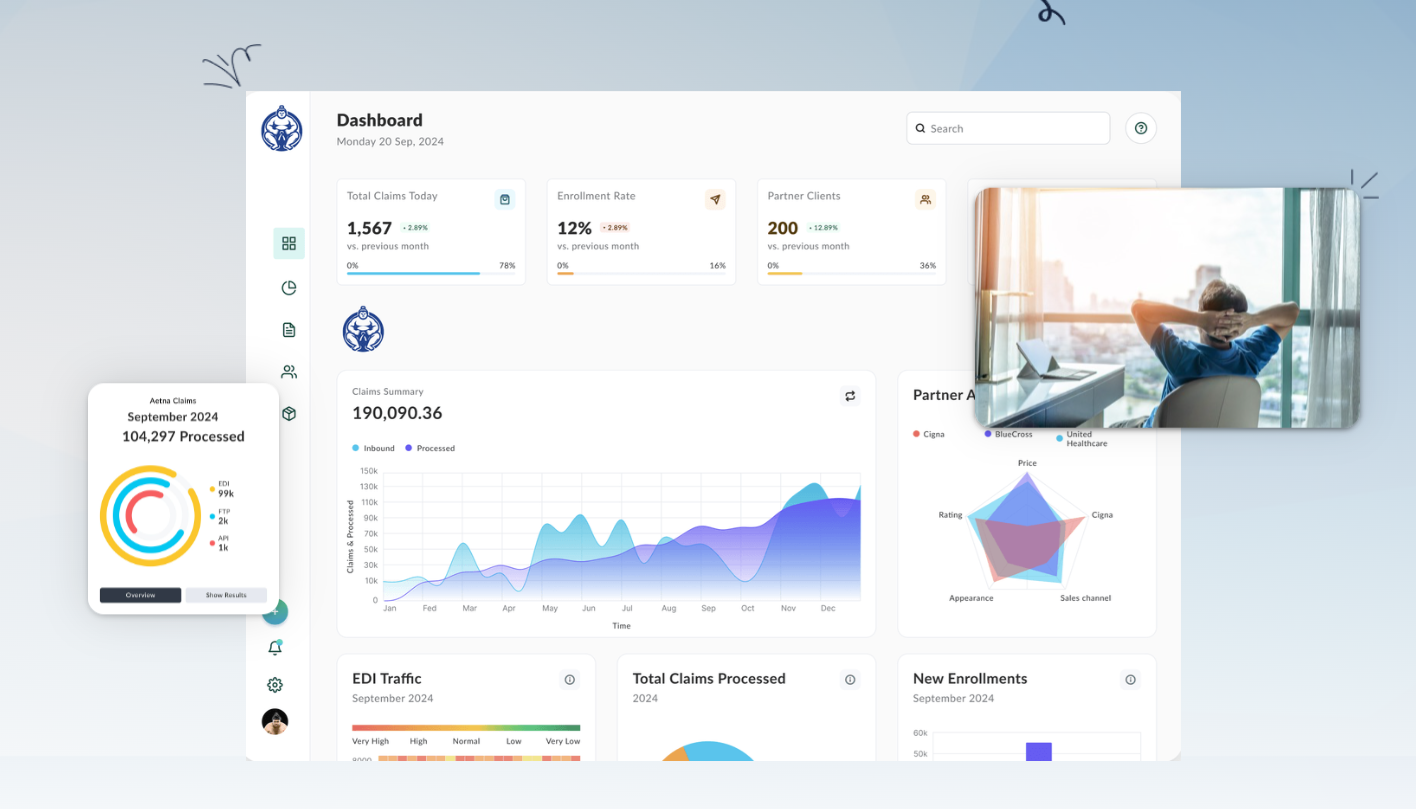Ensuring HIPAA and GDPR Compliance in Healthcare Insurance Data Integration: Practical Steps and Strategies


Healthcare insurance data integration isn’t just about moving data quickly and accurately—it’s about ensuring that the sensitive information entrusted to us is handled with the utmost security and integrity. At EDI Sumo, we know that HIPAA and GDPR compliance are non-negotiable in protecting personal health information (PHI) and personal data of EU citizens. Drawing from our journey working with large-scale payers, here’s a deep dive into practical, real-world measures you can take to ensure your organization’s data integration strategy doesn’t just talk compliance, but lives it.
Understanding Compliance: Why HIPAA and GDPR Matter
Before architecting any integration, it’s vital to grasp what compliance frameworks require:
- HIPAA: Safeguards PHI for US healthcare entities through strict privacy, security, and breach notification rules.
- GDPR: Focuses on protecting personal data of EU citizens, granting them extensive rights and imposing strict data processing obligations—even for US companies handling EU data.
For payers, non-compliance can bring not only hefty fines but also a loss of trust and market position. This means compliance isn't a one-time checkbox—it must be woven into every process and technology that touches sensitive data.
The Complex Reality of Healthcare Data Integration
Today, healthcare insurance companies integrate enrollment data in a dizzying array of formats—EDI 834, CSV, XML, and even legacy positional files. Each of these streams presents unique challenges:
- Inconsistent data validation and formatting
- Multiple hand-offs or manual interventions
- Difficult-to-audit transformation logic
- Missing or delayed error reporting
Without clear governance, it’s easy for gaps to open that lead to inadvertent disclosures or breaches.

Practical Steps for Achieving HIPAA and GDPR Compliance in Data Integration
1. Start with Data Mapping & Inventory
Compliance starts with knowing exactly what data you collect, where it resides, how it flows, and who can access it. Some practical steps we follow and recommend:
- Document all data sources (EDI, files, APIs)
- Map data flows, including transformation and storage points
- Classify data by type (e.g., PHI, PII, non-sensitive)
- Review retention periods and storage locations against legal requirements
This foundational task supports privacy impact assessments (PIA) and identifies weak links up front.
2. Secure Data at Every Stage
- Encryption: Implement asymmetric encryption both in transit and at rest. At EDI Sumo, we make this the default in all data exchanges to counter evolving cyber threats.
- Access Controls: Apply role-based access with granular permissions. Only staff who need records can view or manipulate them, limiting possible exposure.
- Multi-Factor Authentication (MFA): Always enforce MFA, especially in admin interfaces and integration dashboards. OAuth2 support can further modernize access control.
- Audit Trails: Maintain logs for data access, updates, and transfers. We generate real-time audit trails so that any suspicious activity can be pinpointed instantly.
3. Automate Validations and Error Reporting
Manual workflows are error-prone and can let compliance risks slip through the cracks. Automation is key:
- Validate incoming file formats and data content (e.g., WEDI/SNIP levels for claims)
- Trigger real-time discrepancy and error alerts—no more finding issues days or weeks later
- Automate corrections or manual interventions where possible, coupled with a clear audit trail
This ensures that bad data never enters production systems where it could create downstream compliance or processing headaches.

4. Streamline Consent and Data Subject Rights
GDPR, especially, gives individuals rights to access, delete, and modify their data. A good practice is to:
- Unify consent management across all intake points
- Develop responsive workflows for rights requests—access, correction, deletion, restriction, portability
- Document and log all requests and their resolution
Integrating these procedures with your data platforms avoids manual bottlenecks and risks of missed requests.
5. Enforce End-to-End Compliance in Integrations
Healthcare insurance payers don’t operate in a vacuum—data flows to and from internal teams, third-party administrators, and partners. Strategies we’ve seen succeed include:
- Deploying integration middleware that enforces validations, logging, and quarantines non-compliant data
- Standardizing all input—EDI 834, CSV, XML, etc.—into a single, clean canonical format before system handoff
- Documenting and updating data-sharing agreements with all partners
- Using SFTP and secure APIs for partner file exchanges, never email or unsecured channels

6. Stay HIPAA and GDPR Audit-Ready—Always
- Automate Compliance Reporting: Automate periodic reports demonstrating access controls, breach monitoring, and corrections
- Standardize Incident Response: Have a documented protocol (tested!) for breach discovery, notification, and remediation
- Continuous Training: Regularly update staff and partners on regulations, phishing, and breach prevention protocols
Audit readiness should be built in, not an afterthought. When your systems and documentation are prepared, auditors see you as proactive and trustworthy.
How EDI Sumo Approaches Integration & Compliance
Our team has witnessed firsthand how even robust payer operations can get bogged down by legacy processes and inconsistent file standards. That’s why our technology philosophy is built around compliance-first integration:
- Real-time eligibility and claims file monitoring, so nothing slips through the cracks
- Automated error and discrepancy alerts that allow instant action—critical for meeting SLA requirements and avoiding fines
- Simplified tracking of consent and data subject rights requests, as demanded under GDPR
- Deployment on your own secure infrastructure, giving you full data control
- Out-of-the-box integrations for the largest payers (Aetna, Cigna, BCBS, UnitedHealthcare) and core EDI platforms, reducing vendor risk
- Role-based, granular dashboards make it easy for end-users to stay compliant and IT teams to stay unburdened
- HIPAA and GDPR readiness built in, with robust encryption and detailed audit trails
Bridging IT and End-Users: The Untapped Compliance Win
One lesson we’ve learned: The more you can empower the business side—Customer Service, Enrollments, Claims—with secure, real-time data access, the lower your compliance risk. Here’s why:
- No more ad-hoc, risky spreadsheets sent by email
- Faster turnaround on member requests and corrections, vital for regulatory timelines
- Ease of training: staff engage with a simplified interface instead of digging into raw EDI files
- Transparent, enterprise-wide auditability in a single dashboard
When IT, compliance, and business teams are all working from a single, well-governed source of truth, audits become routine—and peace of mind becomes part of the daily operation.

Checklist: Your Compliance-Focused Data Integration Playbook
- ✔️ Map data flows, sources, formats, and storage from end to end
- ✔️ Secure all data with encryption and granular access controls
- ✔️ Automate validation, error detection, and reporting
- ✔️ Centralize consent, rights management, and data subject request logs
- ✔️ Adopt a compliance-first integration tool or middleware for all partners and internal teams
- ✔️ Stay audit-ready with continuous monitoring and staff training
Conclusion: Compliance is Good Business—and Great Service
For payers, EDI and data integration have always demanded accuracy, speed, and reliability. Today, privacy and compliance are paramount, not just to avoid penalties but to deliver the trust that members, employers, and partners deserve. By standardizing, securing, and automating your data integration strategy, you ensure nothing is left to chance—neither regulatory breaches nor missed business opportunities.
Want to see how a compliance-first approach can streamline your eligibility, claims, and customer service operations? Contact EDI Sumo for a no-pressure, expert-led demo and get on the path to worry-free integration.


.png)





.png)

.png)


.png)
